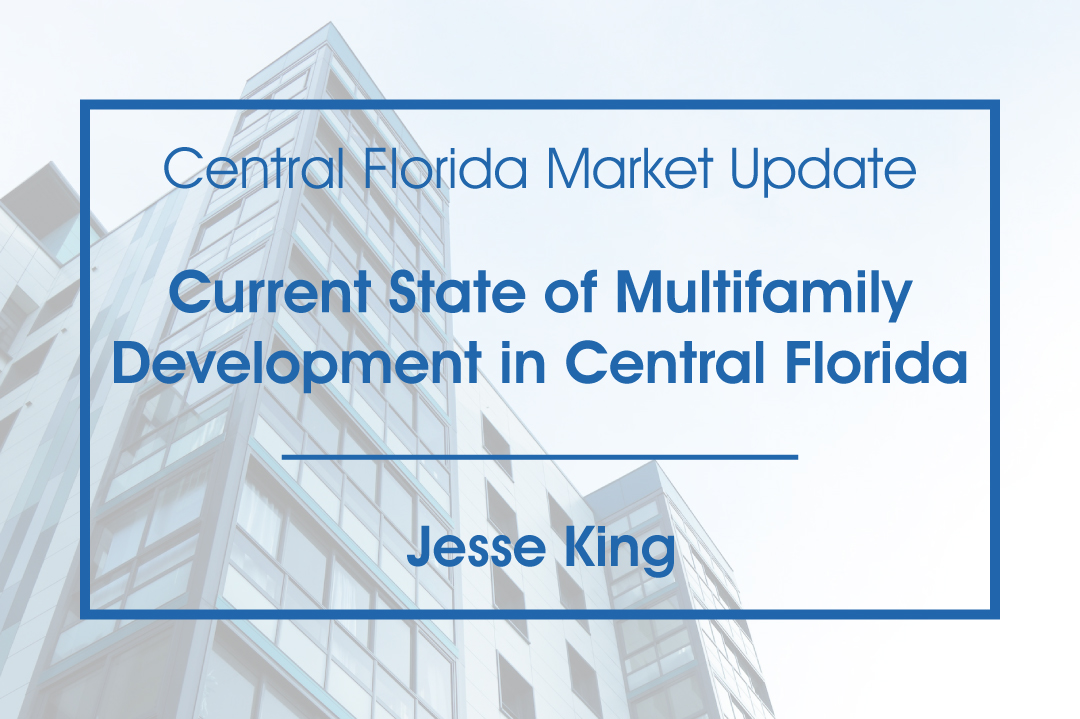
Current State of Multifamily Development in Central Florida
Jesse King
January 2023 – Despite current economic headwinds, the Orlando multifamily market remains strong largely in part to steady immigration to the region and fast pace of population growth. Fueled in large part by aforementioned immigration to the area, the market’s vacancy rate remained in the 7% to 9% range for the trailing 12-month period pre-pandemic before reaching a peak of 10% midway through 2020. Demand has since returned, dropping the vacancy rate to 7.4%. Vacancies are tightest in class B and C properties where leasing interest has been strongest, and there has been marked growth in rents across all floor plans. It’s economy is bolstered by the continued increase of tech and finance tenants and a talent pool fed by local universities such as UCF, Rollins, Valencia and many others. As overall employment continues to accelerate in the region, demand for residential housing continues to increase, with 2.5% of all units under construction being built in the Orlando metro area despite comprising less than one percent of the nation’s population. As a result of these factors, demand for apartments has been robust in Central Florida, and even though the construction pipeline seems replete with 24,000 new units under construction, they are not likely to fully correct the supply-demand imbalance that exists.
While rent growth has been moderating in recent months, asking rents are up 5.6% year over year. The average rent for new developments is well above the market average, but recent trends indicate that that number will push even higher heading into 2023. The average rent in Orlando is $1,780/month, well above the National Index of $1,630/month. Class A rents are even higher at $1,940/month. This is particularly worrying for lower wage workers, composed mainly of those who support the tourism industry of Orlando. Average median household income in Orlando is nearly seven percent lower than the average in the United States, which stands in contrast to the Orlando market ranking second in Florida for pace of annual rent growth among Florida’s six primary multifamily markets. The shortage of workforce and affordable housing is compounding the issue and there is no sign that demand will slow substantially any time soon.
Due to the strong attracters found in the Orlando market, there have been 100 property trades totaling $6.8 billion in total investment volume over the trailing 12-month period. Market cap rates have compressed over the same period to 4.2%, making it increasingly difficult for investors to chase yield in this competitive landscape. Across the Orlando market, there are dozens of new projects under construction comprising an expansion of existing inventory by 11.9%. Orlando benefits from having an abundance of develop land in comparison to many of the other Florida markets. Even with the larger supply of buildable land, development has begun to push to secondary markets. This has resulted in multifamily, industrial, and traditional single-family developers competing with each other for sites large enough to support their new projects. This has not dissuaded developers as roughly 12,000 units are scheduled to be delivered in 2023.
